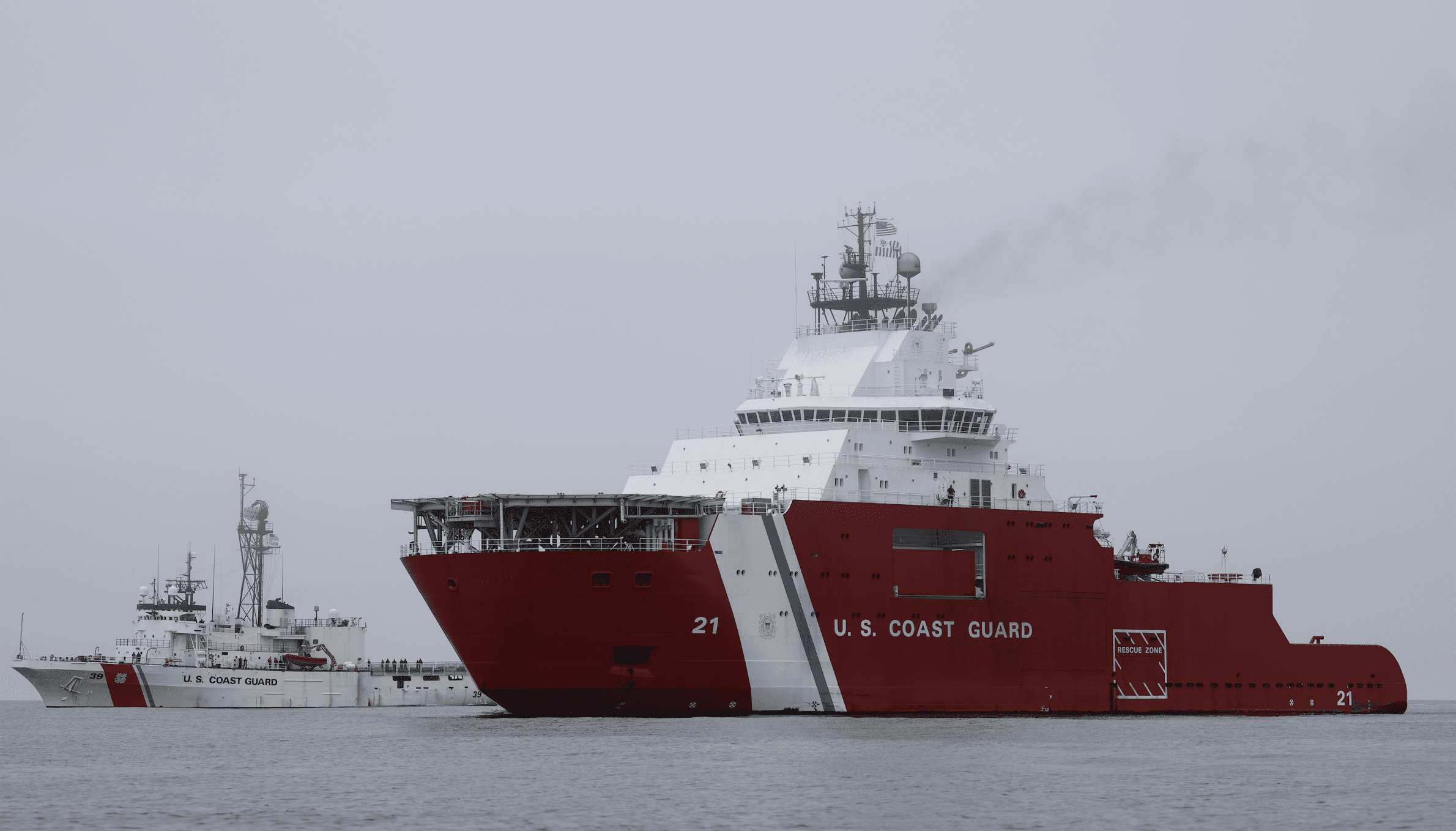 In the continuation of my article “Top 10 Recent Failures Of The USCG – Part 1” here is a list of the remaining modern-day failures:
In the continuation of my article “Top 10 Recent Failures Of The USCG – Part 1” here is a list of the remaining modern-day failures:
Periodic Review Of Offshore Licenses – The CG has made progress in the field of topic specific expertise. They have moved quickly to attract and develop topical experts in commands that oversea specific industry subsets. The offshore oil and gas industry operating in the Gulf Of Mexico is one example with COI inspectors improving their expertise on subjects like Dynamic Positioning and Subsea Construction. But despite this effort change is not occurring at the highest levels.
The offshore licenses for Ballast Control Officer (BCO) and Offshore Installation Manager (OIM) are still applicable to the shallow water gulf but the majority of new construction is currently happening in Deep Water (up to 10,000 feet water depth). This is certainly where the complex instillations operate. The vessels required to operate in deepwater are getting increasingly complicated and, with a combination of large crew compliments (typically 120 to 200+ people) and distance from shore, the potential for loss of life is high. Many of theses vessels are, in fact, ships with lengths approaching 1000ft and almost all require Dynamic Positioning Operators (DPO) to keep the vessel on station. But the Coast Guard does not have a DPO certification and lax rules on the requirement for watch standers of these ships to meet the most basic COLREGS items like Rule 5, “Every vessel shall at all times maintain a proper look-out by sight and hearing”. In fact, a number of watch stations are walled off from the bridge providing no means of visual or audible watch standing. Further, a troubling portion of the people manning the bridges of large drillships carry no Coast Guard certification beyond STCW basic. This does not mean they are not competent (most are!) but it does mean their competence has not been verified.
Even more troubling s is the loop-hole which allows OIM’s (mostly drilling supervisors with little maritime training) to be in command of large ships and vessels. All that is required to be the person-in-charge of a drillship while conducting drilling operations is an OIM certificate. This certificate does require testing but the prerequisites pale in comparison to that required of an Unlimited Master and the test questions are both simplistic and outdated. Some companies recognize the potential risk associated with allowing non-mariners to command a ship, others do not and skirt the rules by helicoptering in mariners only when a vessel transits from one drilling location to another.
This will likely illicit a negative response from the IADC and non-licensed offshore workers so I need to stress, the competency of most DPO’s and OIM’s is unquestionable. Verifying the knowledge and experience of DPO’s and OIM’s to assure competency, however, is not being done at even the most basic level by the USCG.
Diversity Of Experience In Mariner Licensing – From the day the new structure for the licensing of maritime officers was announced, the CG has dropped the ball many times. First the new training requirements were put in place without any schools actually offering the classes which resulted in many mariners needing training certificates they no ability to obtain. When the classes were finally offered it became immediately apparent that the cost of these classes would be significant, choking off the opportunity for advancement to many including Hawsepipers. And these are just a few of the problems.
The most significant problems, however, remain. The scheme was designed to assure competency and included the requirement of onboard assessments to verify the application of subject knowledge. This positive step, however, was undermined by the fact that maritime institutes could sign off on critical assessments during classroom training. The remaining assessments require the signature of a Sr. Officer aboard the vessel but, it is well known that gun-decking exists.
These failings have been widely reported but another remains mostly unnoticed… assessments continue to be signed for mariners who have never completed a required task. For example, one Master Unlimited recently commanded a voyage half-way around the world having never crossed an ocean prior to flying out to meet the ship. How is this possible? He received all of his seatime on near-coastal and DP vessels of unlimited tonnage. The FAA requires experience (e.g. xx number of night landings, xx number of hours in certain types of planes) prior to licensing pilots so why not, rather than require onboard assessments, the law be changed to mandate diversity of experience. The USCG could require seatime to be marked with transit information and require x number of ocean transits, xx number of dockings, xx number of hours in low visibility pilotage?
Whether diversity of experience or another idea is pioneered this gap needs to be identified and closed.
Speed and simplicity – Why is wikipedia more powerful than an encyclopedia? Sure, the effectiveness of social collaboration is one reason and near realtime updates of articles is another but the true answer is speed and simplicity… it is simply quicker to search for an answer on wikipedia than leave your desk and go to the bookshelf. In fact, many people use google to search for entries simply because it’s faster and easier than wikipedia’s own search bar.
The Coast Guard leads the way among government organizations in the utilization of social media and, for this, they should be commended. But they are missing the larger picture despite having the perfect model for success… VHF mayday calls. These calls are highly effective because a mariner simply needs to pick up the mike, say mayday 3 times and give his location… that is all that is required and, because of this, countless lives have been saved. Conversely, modern technology remains untrusted by many and not because the systems don’t work but because they are complicated time wasters.
One such system, the Electronic Chart Display Systems, is truly revolutionary and can be a real asset to bridge teams. The USCG (or IMO, for that matter) requirements, however, hardly consider usability. There are countless hoops a manufacturer is required to demonstrate prior to selling a navigation system but very few of them focus on the user experience. It is not until regulators start to ask “How can we make ECDIS functions as quick, easy & effective as the VHF MAYDAY?” or “How can we make GMDSS ship-to-ship calls as simple as a twitter update on my iPhone” that bridge equipment will prevent future incidents. Until that day functioning the navigational equipment will continue to soak up the time and thought cycles of watchstanders who are approaching distress.
The equipment is already reliable and accurate and Coast Guard representatives in both London and Washington need to worry less about these two items and more about user interface design of bridge systems.
Coast Guard Marketing – Sure the Coast Guard is embracing social media and new channels of communication to interact with the maritime community and the results are substantial but but the government has the mindset that offering programs, community outreach and press releases are sufficient. They are dead wrong. gCaptain does not publish many press releases for one reason, no one reads them. Further there are better designed maritime websites with large operating budgets, professional writers and long histories of brand engagement that are failing while gCaptain, headed-up by a mariner still working his day job at sea (that’s me), is growing stronger by the day. The reason gCaptain has readership numbers that tower over the professional sites is simple… we not only accept advertising but we participate in it!
gCaptain is powerful because of the community we have built. Thousands of mariners have registered on the forum, subscribed to our newsletter and have shared their thoughts in blog comments. It is you, the reader, that propels our success! But most of you found out about gCaptain through our marketing campaigns.
The Coast Guard understands the power of community interaction and gCaptain has received support from the highest levels but it still has the mentality of a large maritime publisher. Namely “We have a great product, so they should come to us”. But this doesn’t work. To find the reason for gCaptain’s success the best place to look is the red ink eblazed on our tax filing. We have spent tens of thousands of dollars buying advertising on other sites, mailing flyers to training schools and investing heavily is obtaining high google rankings. Most of you have probably seen a gCaptain poster in a union hall or an ad for gTrax on facebook but when was the last time you saw a Coast Guard advertisement in a professional magazine or a link to a USCG.mil result in google?
Yes the coast guard has great brand recognition but that is not enough. The fact is that AMVER would be a stronger program if they advertised on gCaptain and the NMC would be less burdened if their services (e.g. electronic tracking of applications) the right links appeared on google.
Impossible you say? The Coast Guard would never allocate money to advertising? Or do you think… “That would never be effective!“. The truth is they already do and it’s highly effective. Each year thousands of young adults join the USCG and other branches of service because they saw advertisements on televisions, blogs and video games. It already works and gCaptain could surely use the money.
Social Media is great but without advertising, the community will forget or ignore all the great programs offered.
The face of the CG – The USCG does a fairly good job of attending various maritime conferences but A) they don’t go to all of them B) most mariners don’t attend conferences.
As it stands right now the average mariner has a negative association with the US Coast Guard. This is because they only see the Coast Guard uniform during license tests and COI inspections… both of which are nerve racking events. Conversely a small subset of mariners have a love for the Coast Guard second only to that of their children… these are the mariners that, tossed from their vessels, have seen the CG emblem on the side of an approaching rescue helicopter.
Now both feelings are extreme but little exists in the region between. Very few mariners feel one way or another about anything CG related from regulatory representatives in London but there is also the mariner who goes through great lengths to take apart failed EPIRBS for post-mortem testing.
First the average Guardian should be interacting with mariners online to answer the questions that are being posed in maritime forums and sites like Facebook and LinekdIn. Some already are (a fact that doesn’t go unnoticed!) but most are not. (P.S. Guardian’s, you can get started by commenting on this article below).
The COI inspector should not be the only one who ever visits your ship. I’d love to get a SAR team to give a lecture on man overboard search techniques to my crew or the EPIRB guru to come out and spot check my unit. By showing the face of the CG we would better understand what we do and be able to better relate to how we can help each other.
There are many other ideas like hosting a US mariner conference or stopping by training schools to give brief lectures. How about softball games? Jokeing aside, the bottom line is the average mariner rarely interacts with the average guardian and that is a real shame because I bet we would become quick friends.
Conclusion – Well those are the most talked about failures but there are certainly more. If you have strong thoughts on what the USCG could be doing to improve post a comment below or add them to THIS forum discussion .

 Join The Club
Join The Club











